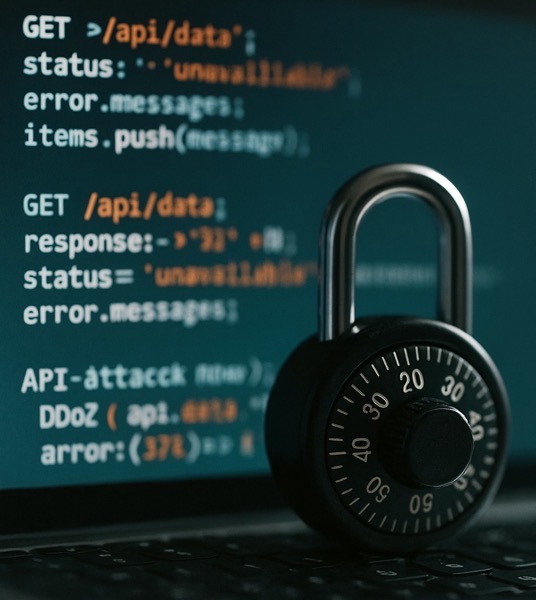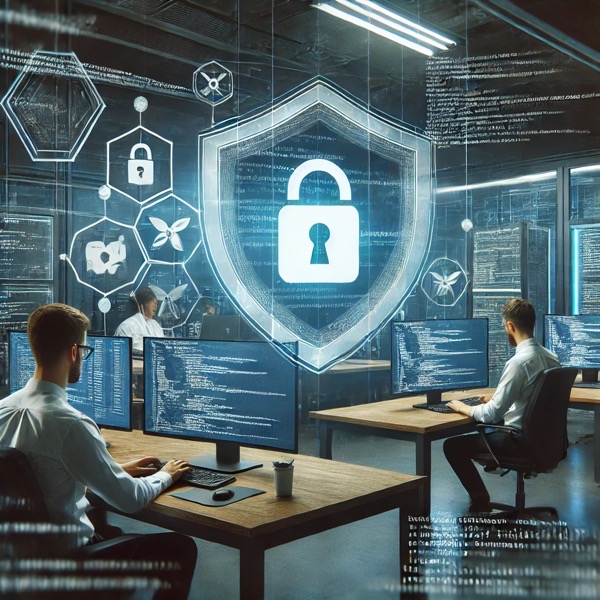Application security has never been more critical, as cyber threats loom large over every piece of software. To safeguard applications, segregation of development, testing, and production environments has emerged as a crucial strategy. This practice not only improves security measures but also streamlines processes, effectively mitigating risks.

To fully grasp the role of environment segregation, one must first understand Application Security (AppSec) and the common vulnerabilities in app development. Properly segregating environments aids in risk mitigation, adopts enhanced security practices, and aligns with secure software development life cycles. It involves distinct setups for development, testing, and production to ensure each stage operates securely and efficiently.
This article delves into the importance of segregating development environments to elevate application security. From understanding secure practices to exploring security frameworks and testing tools, we will uncover how this strategic segregation upholds compliance and regulatory requirements. Embark on a journey to making application security an integral part of your development process with environment segregation.
Importance of Environment Segregation in AppSec
Separating development, test, and production environments is essential for application security (AppSec). This practice prevents data exposure and unauthorized access, as emphasized by ISO 27002 Control 8.31. Failing to segregate these environments can harm the availability, confidentiality, and integrity of information assets.
To maintain security, it’s vital to implement proper procedures and controls. Here’s why:
- Confidentiality: Environment segregation keeps sensitive information hidden. For instance, the Uber code repository incident showed the dangers of accidental exposure.
- Integrity: Segmenting environments prevents unauthorized changes to data.
- Availability: Proper segregation ensures that environments remain operational and secure from threats.
Table of Environment Segregation Benefits:
|
Environment
|
Key Security Measure
|
Benefit
|
|
Development
|
Access controls
|
Prevents unauthorized access
|
|
Test
|
Authorization controls
|
Validates security measures
|
|
Production
|
Extra layer security
|
Protects against breaches
|
Using authorization controls and access restrictions ensures the secure separation of these environments. By following these best practices, you can safeguard your software development project from potential security threats.
Overview of Application Security (AppSec)
Application Security (AppSec) is essential for protecting an application’s code and data from cyber threats. It is a meticulous process that begins at the design phase and continues through the entire software development lifecycle. AppSec employs strategies like secure coding, threat modeling, and security testing to ensure that applications remain secure. By focusing on confidentiality, integrity, and availability, AppSec helps defend against vulnerabilities such as identification failures and server-side request forgery. A solid AppSec plan relies on continuous strategies, including automated security scanning. Proper application security starts with understanding potential risks through thorough threat assessments. These evaluations guide developers in prioritizing defense efforts to protect applications from common threats.
Definition and Purpose
The ISO 27002:2022 Control 8.31 standard focuses on separating different environments to reduce security risks. The main goal is to protect sensitive data by keeping development, test, and production areas distinct. This segregation ensures that the confidentiality, integrity, and availability of information assets are maintained. By following this control, organizations can avoid issues like unauthorized access and data exposure. It not only supports security best practices but also helps companies adhere to compliance requirements. Proper environment separation involves implementing robust procedures and policies to maintain security throughout the software development lifecycle. Protecting these environments is crucial for avoiding potential losses and maintaining a strong security posture.
Common Risks in Application Development
Developing applications involves dealing with several common risks. One significant concern is third-party vulnerabilities found in libraries and components. These vulnerabilities can compromise an application’s security if exploited. Code tampering is another risk where unauthorized individuals make changes to the software. This emphasizes the importance of access controls and version tracking to mitigate potential security flaws. Configuration errors also pose a threat during software deployment. These errors can arise from improper settings, leading to vulnerabilities that can be exploited. Using the Common Weakness Enumeration (CWE) helps developers identify and address critical software weaknesses. Regular monitoring of development endpoints helps detect vulnerabilities early. This proactive approach ensures the overall security posture remains strong and robust throughout the software development process.
Understanding Environment Segregation
Environment segregation is vital for maintaining the security and integrity of applications. According to ISO 27002 Control 8.31, keeping development, testing, and production environments separate helps prevent unauthorized access and protects data integrity and confidentiality. Without proper segregation, companies risk exposing sensitive data, as seen in past incidents. A preventive approach involves strict procedures and technical controls to maintain a clear division between these stages. This ensures that sensitive information assets remain confidential, are not tampered with, and are available to authorized users throughout the application’s lifecycle. By implementing these best practices, organizations can maintain a strong security posture.
Development Environments
Development environments are where software developers can experiment and make frequent changes. This flexibility is essential for creativity and innovation, but it carries potential security risks. Without proper security controls, these environments could be vulnerable to unauthorized access and data exposure. Effective segregation from test and production environments is crucial. Incorporating security processes early in the Software Development Lifecycle (SDLC) helps avoid security bottlenecks. Implementing strong authentication and access controls ensures data confidentiality and integrity. A secure development environment protects against potential vulnerabilities and unauthorized access, maintaining the confidentiality and availability of sensitive information.
Test Environments
Test environments play a crucial role in ensuring that any changes made during development do not cause issues in the production environment. By isolating testing from production through network segmentation, organizations can avoid potential vulnerabilities from spilling over. Security measures in test environments should be as strict as those in production. Regular security audits and penetration testing help identify weaknesses early. Integrating security testing tools allows for better tracking and management of potential security threats. By ensuring that security checks are in place, organizations can prevent potential production problems, safeguarding sensitive information from unauthorized access and suspicious activity.
Production Environments
Production environments require tight controls to ensure stability and security for end-users. Limiting the use of production software in non-production environments reduces the risk of unauthorized access to critical systems. Access to production should be limited to authorized personnel to prevent potential threats from malicious actors. Monitoring and logging systems provide insights into potential security incidents, enabling early detection and quick action. Continuous monitoring helps identify any unnecessary access privileges, strengthening security measures. By maintaining a strong security posture, production environments protect sensitive information, ensuring the application’s integrity and availability are upheld.
Benefits of Environment Segregation
Environment segregation is a cornerstone of application security best practices. By separating development, test, and production environments, organizations can prevent unauthorized access to sensitive data. Only authorized users have access to each environment, which reduces the risk of security issues. This segregation approach helps maintain the integrity and security of information. By having strict segregation policies, organizations can avoid accidental publication of sensitive information. Segmentation minimizes the impact of breaches, ensuring that a security issue in one environment does not affect others. Effective segregation also supports compliance with standards like ISO 27002. Organizations adhering to these standards enhance their security posture by following best practices in data protection.
Risk Mitigation
Thorough environment isolation is vital for risk mitigation. Separate test, staging, and production environments prevent data leaks and ensure that untested code is not deployed. A robust monitoring system tracks software performance, helping identify potential vulnerabilities early. Continuous threat modeling assesses potential threats, allowing teams to prioritize security measures throughout the software development lifecycle. Implementing access controls and encryption further protects applications from potential security threats. Integrating Software Composition Analysis (SCA) tools identifies and monitors vulnerabilities in third-party components. This proactive approach aids in managing risks associated with open-source libraries, allowing development teams to maintain a strong security posture throughout the project.
Enhanced Security Practices
Incorporating security into every phase of the development lifecycle is crucial. This approach helps identify and mitigate common vulnerabilities early, reducing the likelihood of breaches. MobiDev emphasizes the importance of this integration for long-term security. Regular security audits and penetration testing are essential to keep software products secure. These practices identify misconfigurations and potential security flaws. A Secure Software Development Life Cycle (SSDLC) encompasses security controls at every stage. From requirement gathering to operation, SSDLC ensures secure application development. AI technologies further enhance security by automating threat detection and response. They identify patterns indicating potential threats, improving response times. Continuous monitoring of access usage ensures only authorized personnel have access, enhancing overall security.
Secure Development Practices
Establishing secure development practices is vital for protecting software against threats. This involves using a well-planned approach to keep development, test, and production environments separate. By doing this, you help safeguard sensitive data and maintain a strong security posture. Implementing multi-factor authentication (MFA) further prevents unauthorized access. Development teams need to adopt a continuous application security approach. This includes secure coding, threat modeling, security testing, and encrypting data to mitigate vulnerabilities. By consistently applying these practices, you can better protect your software product and its users against potential security threats.
Overview of Secure Software Development Lifecycle (SSDLC)
The Secure Software Development Lifecycle (SSDLC) is a process that integrates security measures into every phase of software development. Unlike the traditional Software Development Life Cycle (SDLC), the SSDLC focuses on contemporary security challenges. It begins with requirements gathering and continues through design, implementation, testing, deployment, and maintenance. By embedding security checks and threat modeling, SSDLC aims to prevent security flaws early on. For development teams, understanding the SSDLC is crucial. It aids in reducing potential vulnerabilities and protecting against data breaches.
Code Tampering Prevention
Preventing code tampering is essential for maintaining the integrity of your software. One way to achieve this is through strict access controls, which block unauthorized individuals from altering the source code. Using version control systems is another effective measure. These systems track changes to the code, making it easier to spot unauthorized modifications. Such practices are vital because code tampering can introduce vulnerabilities or bugs. By monitoring software code and maintaining logs of changes, development teams can ensure accountability. Together, these steps help in minimizing potential threats and maintaining secure software.
Configuration Management
Configuration management is key to ensuring your system remains secure against evolving threats. It starts with establishing a standard, secure setup. This setup serves as a baseline, compliant with industry best practices. Regular audits help in maintaining adherence to this baseline and in identifying deviations promptly. Effective configuration management includes disabling unnecessary features and securing default settings. Regular updates and patches are also crucial. These efforts help in addressing potential vulnerabilities, thereby enhancing the security of your software product. A robust configuration management process ensures your system is resilient against security threats.
Access Control Implementation
Access control is a central component of safeguarding sensitive systems and data. By applying the principle of least privilege, you ensure that users and applications access only the data they need. This minimizes the risk of unauthorized access. Role-based access control (RBAC) streamlines permission management by assigning roles with specific privileges. This makes managing access across environments simpler for the development team. Regular audits further ensure that access controls are up-to-date and effective. Implementing Multi-Factor Authentication (MFA) enhances security by requiring multiple forms of identification. Monitoring access and reviewing controls aids in detecting suspicious activity. Together, these measures enhance your security posture by protecting against unauthorized access and potential vulnerabilities.
Best Practices for Environment Segregation
Creating separate environments for development, testing, and production is crucial for application security. This separation helps mitigate potential security issues by allowing teams to address them before they impact the live environment. The development environment is where new features are built. The test or staging environments allow for these features to be tested and bugs to be squashed. This ensures any changes won’t disrupt the live application. Proper segregation also enables adequate code reviews and security checks to catch potential vulnerabilities. To further secure these environments, employing strong authentication and access controls is critical. This reduces the risk of unauthorized access. By maintaining parity between staging and production environments, organizations can prevent testing discrepancies. This approach ensures smoother deployments and increases the overall security posture of the software product.
Continuous Monitoring
Continuous monitoring is a key part of maintaining secure environments. It provides real-time surveillance to detect potential threats swiftly. Implementing a Security Information and Event Management (SIEM) tool helps by collecting and analyzing logs for suspicious activity. This allows development teams to respond quickly to anomalies which might indicate a security issue. By continuously logging and monitoring systems, organizations can detect unauthorized access attempts and potential vulnerabilities. This early detection is vital in protecting against common vulnerabilities and securing environment variables and source code. As infrastructure changes can impact security, having an automated system to track these changes is essential. Continuous monitoring offers an extra layer of protection, ensuring that potential threats are caught before they can cause harm.
Regular Security Audits
Regular security audits are crucial for ensuring that systems adhere to the best security practices. These audits examine the development and production environments for vulnerabilities such as outdated libraries and misconfigurations. By identifying overly permissive access controls, organizations can tighten security measures. Security audits usually involve both internal assessments and external evaluations. Techniques like penetration testing and vulnerability scanning are commonly used. Conducting these audits on a regular basis helps maintain effective security measures. It also ensures compliance with evolving security standards. By uncovering potential security flaws, audits play a significant role in preventing unauthorized access and reducing potential security threats. In the software development lifecycle, regular audits help in maintaining a secure development environment by identifying new vulnerabilities early.
Integrating Security in the DevOps Pipeline
Integrating security within the DevOps pipeline, often referred to as DevSecOps, is vital for aligning security with rapid software development. This integration ensures that security is an intrinsic part of the software development lifecycle. A ‘shift everywhere’ approach embeds security measures both in the Integrated Developer Environment (IDE) and CI/CD pipelines. This allows vulnerabilities to be addressed long before reaching production environments. Automation of security processes within CI/CD pipelines reduces friction and ensures quicker identification of security issues. Utilizing AI technologies can enhance threat detection and automate testing, thus accelerating response times. A shift-left strategy incorporates security checks early in the development process. This helps in precise release planning by maintaining secure coding standards from the beginning. This proactive approach not only lowers risks but strengthens the overall security posture of a software development project.
Frameworks and Guidelines for Security
Application security is crucial for protecting software products from potential threats and vulnerabilities. Organizations rely on various frameworks and guidelines to maintain a robust security posture. The National Institute of Standards and Technology Cybersecurity Framework (NIST CSF) is one such framework. It categorizes risk management into five key functions: Identify, Protect, Detect, Respond, and Recover. Another important standard is ISO/IEC 27001, which ensures the confidentiality, integrity, and access control of security information. Applying a secure software development lifecycle can significantly decrease the risk of exploitable vulnerabilities. Integrating security tools and processes throughout the development lifecycle shields software from evolving cyber threats. Additionally, following the Open Web Application Security Project (OWASP) recommendations helps strengthen security practices in web applications.
ISO 27002:2022 Control 8.31
ISO 27002:2022 Control 8.31 emphasizes the strict segregation of development, test, and production environments. This practice is vital for minimizing security issues and protecting sensitive data from unauthorized access. Proper segregation helps maintain the confidentiality, integrity, and availability of information assets. By enforcing authorization controls and access restrictions, organizations can prevent data exposure and potential vulnerabilities.
Ensuring these environments are separate supports the development team in conducting thorough security checks and code reviews without affecting the production environment. It also helps software developers to identify and address potential security threats during the application development phase. A clear distinction between these environments safeguards the software development lifecycle from common vulnerabilities.
Moreover, the implementation of Control 8.31 as guided by ISO 27002:2022 secures organizational environments. This measure protects sensitive information from unauthorized disclosure, ensuring that security controls are effectively maintained. Adhering to such standards fortifies the security measures, creating an extra layer of defense against suspicious activity and potential threats. Overall, following these guidelines strengthens an organization’s security posture and ensures the safe deployment of software products.
Implementing Security Testing Tools
To maintain application security, it’s important to use the right testing tools. Static Application Security Testing (SAST) helps developers find security flaws early in the development process. This means weaknesses can be fixed before they become bigger issues. Dynamic Application Security Testing (DAST) analyzes applications in real-time in production environments, checking for vulnerabilities that could be exploited by cyberattacks. Interactive Application Security Testing (IAST) combines both static and dynamic methods to give a more comprehensive evaluation. By regularly using these tools, both manually and automatically, developers can identify potential vulnerabilities and apply effective remediation strategies. This layered approach helps in maintaining a strong security posture throughout the software development lifecycle.
Tools for Development Environments
In a development environment, using the right security controls is crucial. SAST tools work well here as they scan the source code to spot security weaknesses. This early detection is key in preventing future issues. Software Composition Analysis (SCA) tools also play an important role by keeping track of third-party components. These inventories help identify potential vulnerabilities. Configuring security tools to generate artifacts is beneficial, enabling quick responses to threats. Threat modeling tools are useful during the design phase, identifying security threats early on. The development team then gains insights into potential vulnerabilities before they become a problem. By employing these security measures, the development environment becomes a fortified area against suspicious activity and unauthorized access.
Tools for Testing Environments
Testing environments can reveal vulnerabilities that might not be obvious during development. Dynamic Application Security Testing (DAST) sends unexpected inputs to applications to find security weaknesses. Tools like OWASP ZAP automate repetitive security checks, streamlining the testing process. SAST tools assist developers by spotting and fixing security issues in the code before it goes live. Interactive Application Security Testing (IAST) aggregates data from SAST and DAST, delivering precise insights across any development stage. Manual testing with tools like Burp Suite and Postman allows developers to interact directly with APIs, uncovering potential security threats. Combining these methods ensures that a testing environment is well equipped to handle any potential vulnerabilities.
Tools for Production Environments
In production environments, security is critical, as this is where software interacts with real users. DAST tools offer real-time vulnerability analysis, key to preventing runtime errors and cyberattacks. IAST provides comprehensive security assessments by integrating static and dynamic methods. This helps in real-time monitoring and immediate threat detection. Run-time Application Security Protection (RASP) is another layer that automates incident responses, such as alerting security teams about potential threats. Monitoring and auditing privileged access prevent unauthorized access, reducing risks of malicious activities. Security systems like firewalls and intrusion prevention systems create a robust defense. Continuous testing in production is crucial to keep software secure. These efforts combine to safeguard against potential security threats, ensuring the software product remains trustworthy and secure.
Compliance and Regulatory Standards
In today’s digital landscape, adhering to compliance regulations like GDPR, HIPAA, and PCI DSS is crucial for maintaining strong security frameworks. These regulations ensure that software development processes integrate security from the ground up. By embedding necessary security measures throughout the software development lifecycle, organizations can align themselves with these important standards. This approach not only safeguards sensitive data but also builds trust with users. For organizations to stay compliant, it’s vital to stay informed about these regulations. Implementing continuous security testing is key to protecting applications, especially in production environments. By doing so, businesses can meet compliance standards and fend off potential threats.
Ensuring Compliance Through Segregation
Segregating environments is a key strategy in maintaining compliance and enhancing security. Control 8.31 mandates secure separation of development, testing, and production environments to prevent issues. This control involves collaboration between the chief information security officer and the development team. Together, they ensure the separation protocols are followed diligently.
Maintaining effective segregation requires using separate virtual and physical setups for production. This limits unauthorized access and potential security flaws in the software product. Organisations must establish approved testing protocols prior to any production environment activity. This ensures that potential security threats are identified before they become problematic.
Documenting rules and authorization procedures for software use post-development is crucial. By following these guidelines, organizations can meet Control 8.31 compliance. This helps in reinforcing their application security and enhancing overall security posture. It also aids in avoiding regulatory issues, ensuring smooth operations.
Meeting Regulatory Requirements
Understanding regulations like GDPR, HIPAA, and PCI DSS is essential for application security compliance. Familiarizing yourself with these standards helps organizations incorporate necessary security measures. Regular audits play a vital role in verifying compliance. They help identify security gaps and address them promptly to maintain conformity with established guidelines.
Leveraging a Secure Software Development Lifecycle (SSDLC) is crucial. SSDLC integrates security checks throughout the software development process, aiding compliance efforts. Continuous integration and deployment (CI/CD) should include automated security testing. This prevents potential vulnerabilities from causing non-compliance issues.
Meeting these regulatory requirements reduces legal risks and enhances application safety. It provides a framework that evolves with the continuously shifting landscape of cyber threats. Organizations that prioritize these security practices strengthen their defenses and keep applications secure and reliable. By doing so, they not only protect sensitive data but also foster user trust.
Seeking Expertise: Getting More Information and Help from MicroSolved, Inc.
Navigating the complex landscape of application security can be challenging. For organizations looking for expert guidance and tailored solutions, collaborating with a seasoned security partner like MicroSolved, Inc. can be invaluable.
Why Consider MicroSolved, Inc.?
MicroSolved, Inc. brings in-depth knowledge and years of experience in application security, making us a reliable partner in safeguarding your digital assets. Our team of experts stay at the forefront of security trends and emerging threats, offering insights and solutions that are both innovative and practical.
Services Offered by MicroSolved, Inc.
MicroSolved, Inc. provides a comprehensive range of services designed to enhance your application security posture:
- Security Assessments and Audits: Thorough evaluations to identify vulnerabilities and compliance gaps.
- Incident Response Planning: Strategies to efficiently manage and mitigate security breaches.
- Training and Workshops: Programs aimed at elevating your team’s security awareness and skills.
Getting Started with MicroSolved, Inc.
Engaging with MicroSolved is straightforward. We work closely with your team to understand your unique security needs and provide customized strategies. Whether you’re just beginning to establish multiple environments for security purposes or seeking advanced security solutions, MicroSolved, Inc. can provide the support you need.
For more information or to schedule a consultation, visit our official website (microsolved.com) or contact us directly (info@microsolved.com / +1.614.351.1237). With our assistance, your organization can reinforce its application security, ensuring robust protection against today’s most sophisticated threats.
* AI tools were used as a research assistant for this content.





